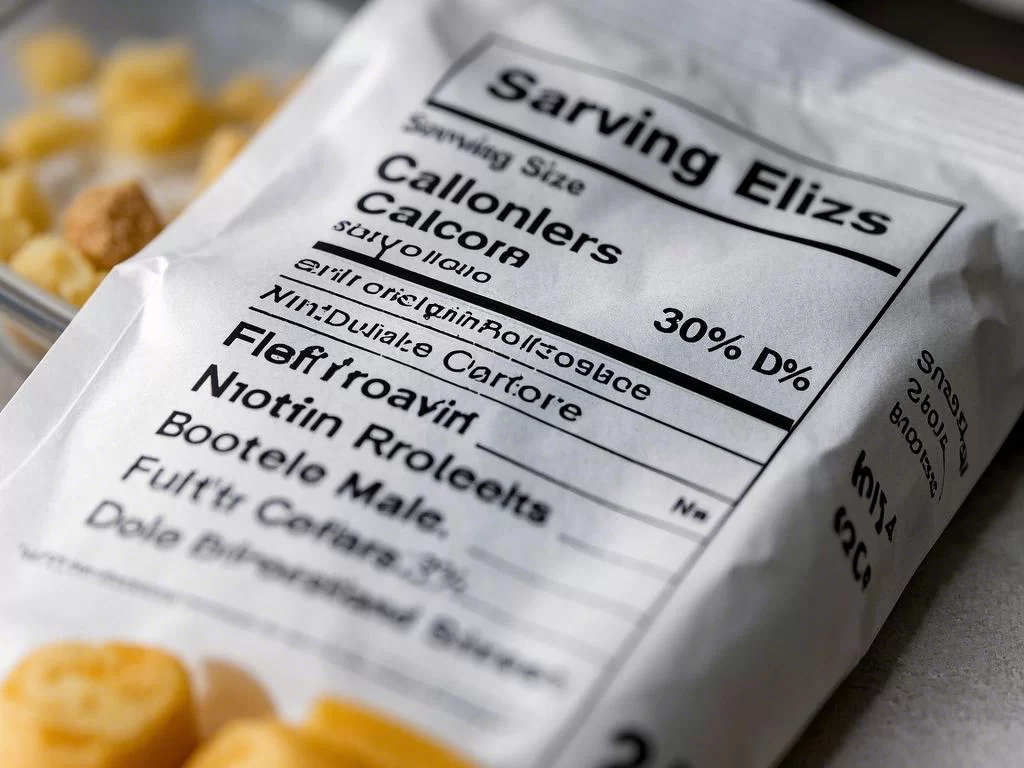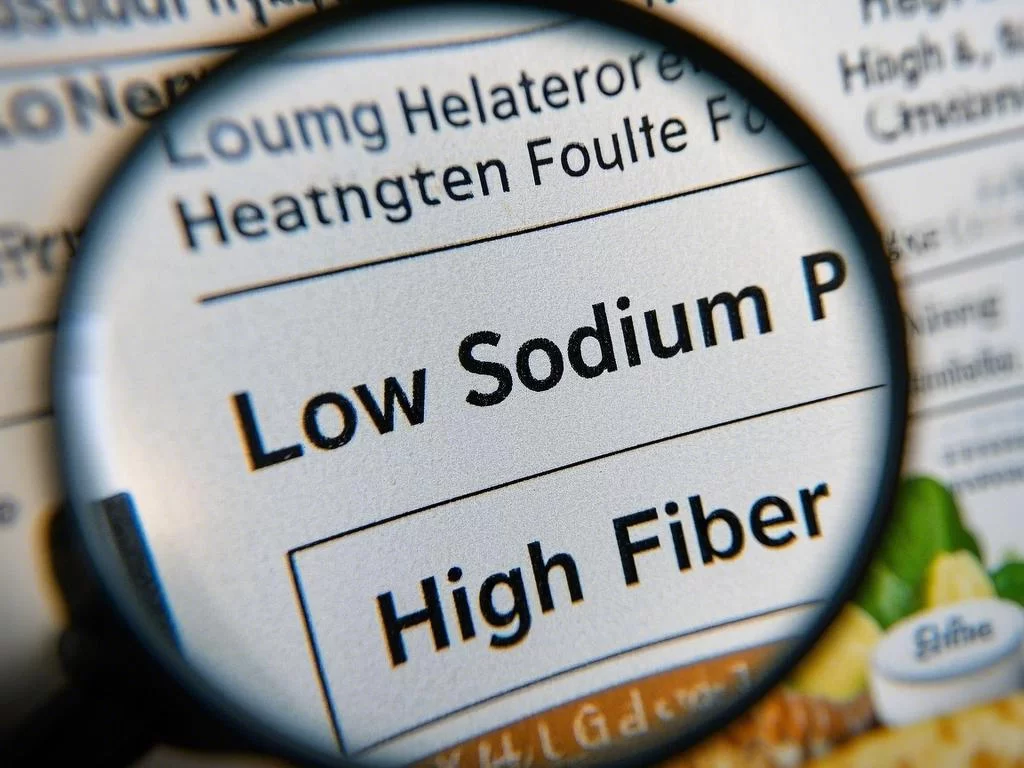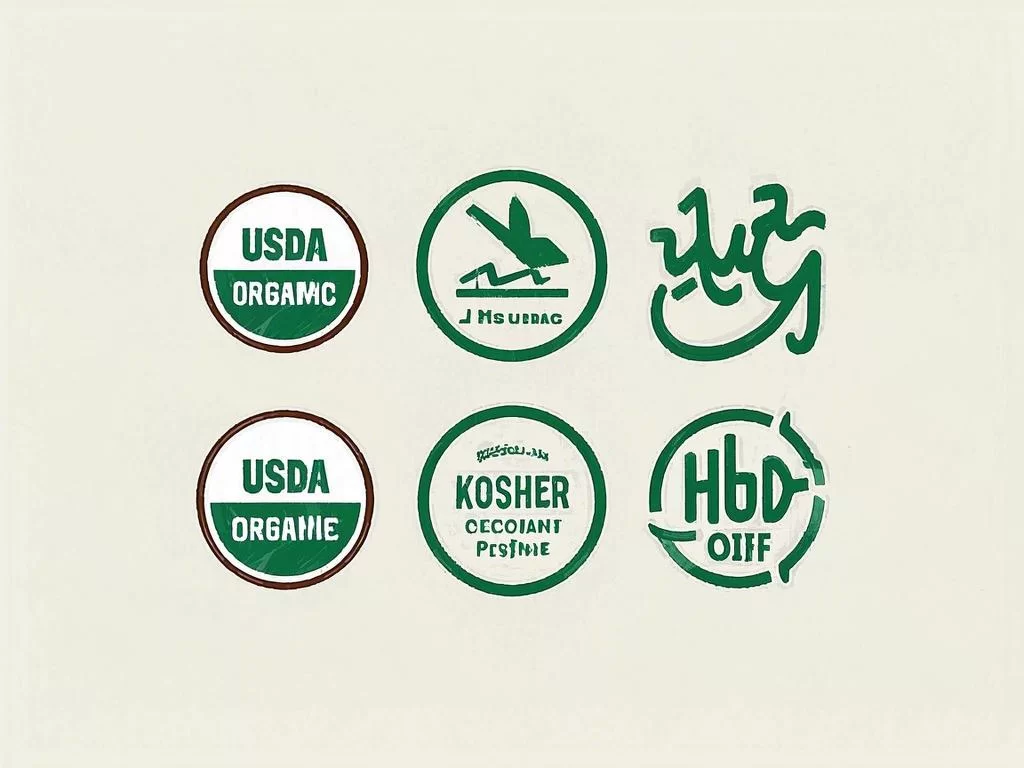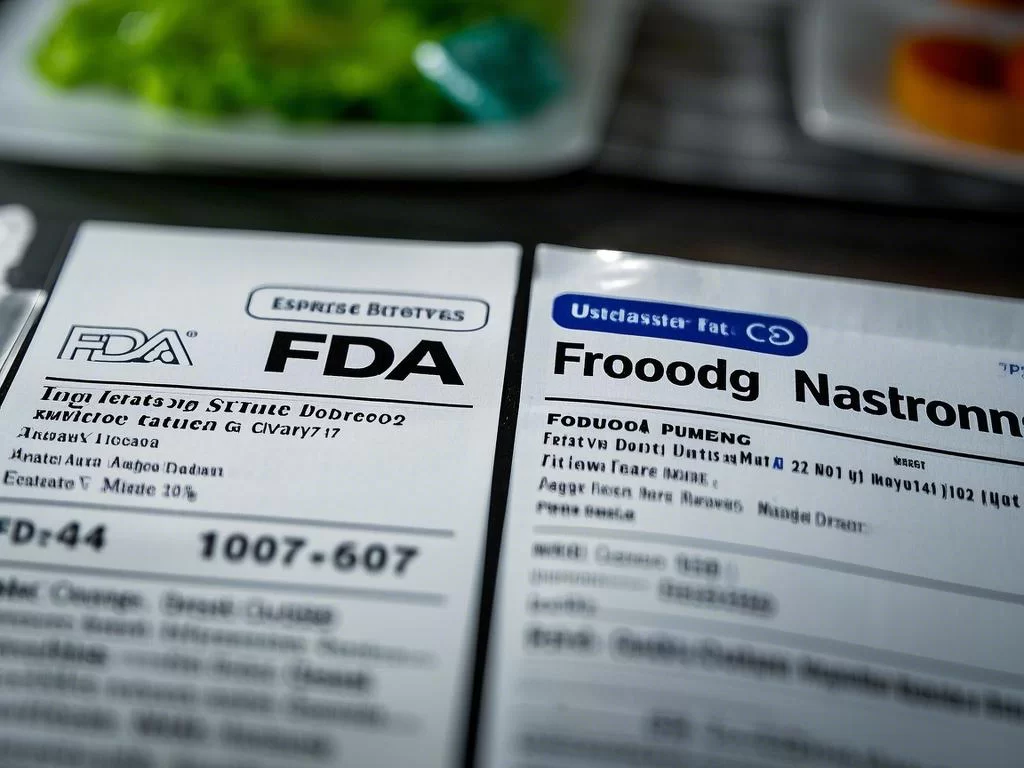A Comprehensive Guide to Understanding Food Label Information Beyond the Ingredients List
Imagine standing in a grocery aisle squinting at tiny print on a food package, wondering what all those numbers and percentages actually mean. Food labels contain crucial information about what we’re putting into our bodies, yet research from the 2024 International Food Information Council (IFIC) survey shows that 68% of consumers find food labels confusing or difficult to interpret quickly.
The Anatomy of a Food Label: Beyond the Ingredients
When you look at a packaged food item, the ingredients list is just the beginning. What appears underneath provides equally important information about the nutritional content, allergens, and manufacturer claims that affect your health decisions.
Mandatory Elements Required by Law
According to FDA regulations (21 CFR 101.4), there are seven required components that must appear on packaged food labels underneath the ingredients list:
- Nutrition Facts Panel – The standardized table showing calories, nutrients, and serving information
- Allergen Statements – Clear identification of major food allergens
- Manufacturer Information – Name and address of the manufacturer, packer, or distributor
- Net Quantity – The amount of food in the package by weight, volume, or count
- Country of Origin – Where the food was produced (for certain products)
- Lot or Batch Code – Production identification information
- Instructions – Storage, preparation, or usage directions when needed
Did You Know? In 2023, the FDA issued 217 warning letters to food manufacturers for failing to properly disclose allergen information below the ingredients list, making it the most common food labeling violation.
Decoding the Nutrition Facts Panel
The most prominent element underneath the ingredients list is the Nutrition Facts panel. This standardized table allows consumers to make informed decisions about their dietary choices.

Serving Information
At the top of the Nutrition Facts panel, you’ll find:
- Serving Size – A standardized amount of the food established by the FDA
- Servings Per Container – The total number of servings in the entire package
- Calories – The energy content per serving
The serving size is particularly important as all the nutritional information listed below is based on this amount—not necessarily on how much you might actually eat.
Nutrients and Daily Values
Below the calorie information, you’ll find a breakdown of:
- Macronutrients – Fats (total, saturated, and trans), cholesterol, sodium, carbohydrates (including fiber and sugars), and protein
- Micronutrients – Vitamins and minerals
Next to many nutrients, you’ll see a percentage. This represents the “%DV” or Percent Daily Value—how much of your daily recommended intake of that nutrient is provided by one serving. These calculations are based on a 2,000-calorie daily diet as referenced in the USDA Handbook 8.
For example, if the %DV for sodium is 12%, that means one serving provides 12% of the total sodium you should consume in a day.
Understanding %DV Calculations
- Less than 5% DV is considered low
- 20% or more DV is considered high
This quick reference can help you determine if a food is high or low in a particular nutrient without needing to know the exact recommendations in grams or milligrams.
Allergen Information: The Critical Safety Net

Following the FASTER Act updates of 2024, food manufacturers must clearly identify the presence of any of the nine major food allergens:
- Milk
- Eggs
- Fish
- Crustacean shellfish
- Tree nuts
- Peanuts
- Wheat
- Soybeans
- Sesame (newly added)
These allergens must be listed either within the ingredients list or in a separate “Contains” statement immediately below the ingredients.
Hidden Allergen Examples
Sometimes allergens appear under different names:
- Casein or whey (milk)
- Albumin (eggs)
- Bulgur or semolina (wheat)
- Lecithin (may contain soy)
This is why the explicit allergen callout is so important for those with food sensitivities.
Manufacturer Claims and What They Really Mean
Below the ingredients and nutrition facts, you may find various claims about the product’s health benefits or composition. The 2025 FDA Guidance provides strict definitions for these terms:

Nutrient Content Claims
- “Low Sodium” – Contains 140mg or less per serving
- “Reduced Sodium” – Contains at least 25% less sodium than the regular version
- “High Fiber” – Contains 5g or more per serving
- “Good Source of” – Contains 10-19% of the Daily Value for a particular nutrient
Health Claims
These are statements that link a food component to a reduced risk of a disease or health condition. They require significant scientific evidence and FDA approval.
Decoding Challenge: Look at a cereal box in your pantry. Can you find an approved health claim? (Hint: Many cereals contain claims about heart health related to whole grains or fiber.)
Additional Information Found Below Ingredients
Country of Origin Labeling (COOL)
Certain foods—particularly meats, fish, fruits, vegetables, and nuts—must identify their country of origin. This information is typically found near the manufacturer’s address.
Kosher, Halal, and Other Religious Certifications

Religious dietary certifications are voluntary but common on many products. Look for symbols like:
- OU, K, or CRC (Kosher)
- M or Crescent M (Halal)
Third-Party Certifications
Various non-governmental certifications may appear:
- USDA Organic
- Non-GMO Project Verified
- Fair Trade Certified
- Gluten-Free
QA Section: Your Most-Asked Questions
Q: Is “natural flavors” the same as “artificial flavors” on a food label?
A: No. Natural flavors are derived from actual food sources (plants or animals), while artificial flavors are created synthetically in laboratories. Both can contain dozens of chemical components, but the source differentiation is what matters for labeling purposes.
Q: Why do some ingredients have numbers or scientific names instead of simple terms?
A: Food additives often appear with their scientific names or assigned numbers (like “Red 40” or “E322”) to precisely identify the specific compound being used. This precision is important for regulatory compliance and for consumers with specific sensitivities.
Q: How can I tell if a product contains added sugars versus natural sugars?
A: Since 2020, the Nutrition Facts panel separates “Total Sugars” from “Added Sugars.” Natural sugars (like those in fruit) are counted in Total Sugars but not in Added Sugars. This distinction helps consumers identify products with excessive sugar additions.
The International Perspective: EU vs. FDA Requirements
While this guide focuses on FDA standards, it’s worth noting the differences if you purchase imported products:
- EU Regulation No 1169/2011 requires allergens to be emphasized (often in bold) within the ingredients list itself, rather than in a separate statement.
- Nutrition information in the EU is typically presented per 100g rather than per serving.
- The EU requires more extensive front-of-pack labeling systems in many countries.

Did You Know? The UK’s “traffic light” system uses color-coding (red, amber, green) to visually indicate nutrient levels, a system not currently used in the US.
The 3-Second Label Checklist
When you’re short on time but want to make informed choices:
- Check the Serving Size – Is it realistic for how you’ll consume the product?
- Scan the First Three Ingredients – These make up the majority of the product
- Look at Sugar, Sodium, and Saturated Fat – Are the %DVs less than 20%?

State-Specific Variations and Compliance
Disclaimer: While FDA regulations apply nationwide, some states have additional labeling requirements. California’s Proposition 65, for example, requires warning labels for products containing substances known to cause cancer or birth defects. Always check local regulations if you’re a manufacturer distributing across multiple states.
Understanding what’s listed underneath the ingredients on food labels empowers you to make better nutritional choices for yourself and your family. By familiarizing yourself with these standardized elements, you can quickly evaluate products and compare options without falling for misleading marketing claims.
The next time you’re in the grocery store, take a moment to look beyond the flashy front-of-package claims and dive into the detailed information that appears underneath the ingredients list. Your health may depend on it.
